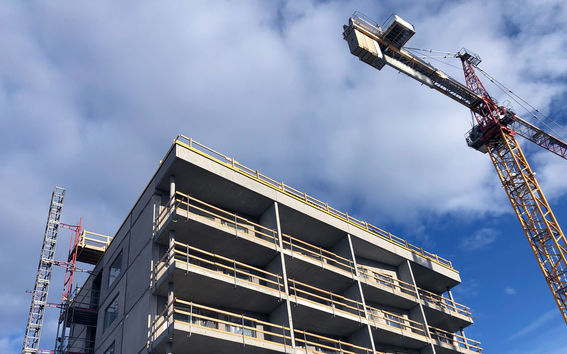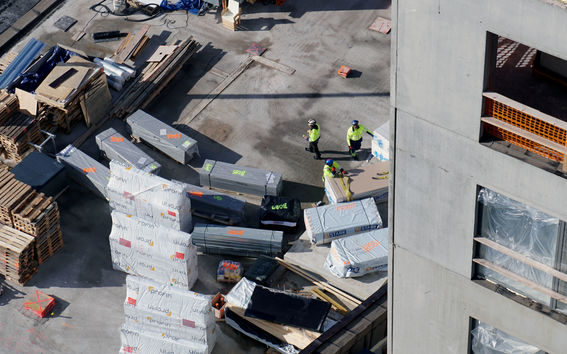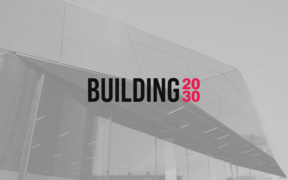Solving the construction productivity puzzle with digital situation awareness

'We have developed many processes and digital tools for designers and office workers but overlooked the problems of the individuals who actually build the building,' says Olli Seppänen, Professor of Practice at Aalto University.
Seppänen’s team is conducting research for the Building 2030 consortium, which comprises 17 construction, engineering, logistics and software development firms. One of the critical issues that they have identified is waste in the construction process. Aalto University studies have shown that construction workers spend up to 70% of their time doing non-value-adding tasks. So far, digitalisation has done little to fix this dilemma.
Missing link
Generally, on Finnish construction sites, workers themselves have to solve problems that stem from poorly prepared work. However, when they arrive at the work face, they typically do not have the necessary materials, tools and instructions available so they have to plan and micromanage their own work on the spot. Also, sometimes they have to wait for the preceding team to finish their own delayed work. Furthermore, stored materials or machines can block access to the site.
At the root of these problems lies the missing link between design and realisation. Designers typically don’t provide information that specifically serves the needs of builders. Building information models usually represent the end result, but do not outline the steps needed to get there. In addition, those who do the scheduling and construction planning usually don’t have the insights of those who ultimately do the work.
There are good examples from the United States and the United Kingdom of contractors who have solved this problem, or at least parts of it. For instance, in the US, HVAC design for construction is done by the companies that prefabricate and install the pipes and ducts on site. Some US construction managers produce task-specific information packages for contractors as a service.
Prefabrication can solve some of the aforementioned problems, but only alongside a carefully planned and rigorously executed lean construction process.

Digital situation awareness to the rescue
'Situation awareness is about providing the worker with just the right information, conditions, and resources in the right place, at the right time,' Seppänen explains. 'To be able to do that, we need to link the design, planning, and production information with sensor data in an anticipatory way.'
Together with the Building 2030 firms, Aalto University researchers have reviewed and piloted several digital solutions for the construction site. Among others, they have used indoor positioning technologies to capture the movements of people, equipment, and materials. With mobile phones, workers are able to locate machines and building materials quickly. Fira, a Finnish contractor included in the consortium, has also developed and tested a mobile app for weekly and daily task management and delivering work orders.
Seppänen emphasises that in reality there is no shortage of sensor data available, but the issue is that it is not useful unless there is an easy and efficient way to turn it into actionable information. He reminds us that it took researchers several months to analyse the data and understand the situation of a specific construction site in a recently completed iCONS research project.
Digital situation awareness may even create the need for new types of professionals and AI systems. Their job will be to link information with tasks to make the process fluid.
Every little bit helps
The good thing about developing situation awareness is that it does not have to be an all-encompassing solution before it pays off. Even partial solutions can improve productivity, one notch at a time.
Knowing where to find building materials and machines on a site can save hours or even days for a worker every week. Having them ready at the work face when you need them would naturally be a better solution.
Seppänen envisions a future where the entire supply chain can provide information to craftspeople via a shared platform. That way, each worker would have the day’s tasks on their mobile device, materials ready on the site, appropriate tools provided by the rental firm, and the conditions properly prepared so that the work can be carried out on schedule. Video and photo survey systems could scan the site and compare the as-built reality with the design models and report back if there are any discrepancies. Similarly, they could alert a team to clear out any obstacles from the site.
'Together with the companies in the Building 2030 consortium, we will devise real business cases and pilot projects for software developers and service providers. It’s clear that situation awareness is an area where innovative, user-friendly solutions are especially needed,' says Seppänen.
Building 2030
The Building 2030 project envisions, researches and promotes a better future of construction.

- Published:
- Updated:
Read more news

DeployAI Partners Gather for Heart Beat Meeting in Helsinki
The European DeployAI project's partners gathered for the Heart Beat meeting hosted by Aalto University Executive Education in Helsinki.
Get to know us: Associate Professor Maria Sammalkorpi
Sammalkorpi received her doctorate from Helsinki University of Technology 2004. After her defence, she has worked as a researcher at the Universities of Princeton, Yale and Aalto.
Aalto computer scientists in ICML 2024
Computer scientists in ICML 2024